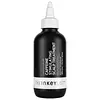What's inside
What's inside
 Key Ingredients
Key Ingredients

 Benefits
Benefits

 Concerns
Concerns

No concerns
 Ingredients Side-by-side
Ingredients Side-by-side

Water
Skin ConditioningBetaine
HumectantCaffeine
Skin ConditioningPanthenol
Skin ConditioningPhenoxyethanol
PreservativeGlycerin
HumectantXanthan Gum
EmulsifyingEthylhexylglycerin
Skin ConditioningTrisodium Ethylenediamine Disuccinate
Lactic Acid
BufferingSodium Metabisulfite
AntioxidantGlycine
BufferingLarix Europaea Wood Extract
HumectantCamellia Sinensis Extract
AntioxidantZinc Chloride
AntimicrobialWater
Skin ConditioningPropanediol
SolventSodium Ascorbyl Phosphate
AntioxidantSalicylic Acid
MaskingAmmonium Acryloyldimethyltaurate/Vp Copolymer
Phenoxyethanol
PreservativeCaprylyl/Capryl Glucoside
CleansingXanthan Gum
EmulsifyingGlycerin
HumectantSodium Hydroxide
BufferingMadecassoside
AntioxidantEthylhexylglycerin
Skin ConditioningHydroxyacetophenone
AntioxidantSodium Gluconate
Skin ConditioningSodium Metabisulfite
AntioxidantLecithin
EmollientAscorbyl Palmitate
AntioxidantNelumbo Nucifera Flower Extract
Skin ConditioningNymphaea Coerulea Flower Extract
Skin ConditioningTocopherol
AntioxidantHelianthus Annuus Seed Oil
EmollientWater, Propanediol, Sodium Ascorbyl Phosphate, Salicylic Acid, Ammonium Acryloyldimethyltaurate/Vp Copolymer, Phenoxyethanol, Caprylyl/Capryl Glucoside, Xanthan Gum, Glycerin, Sodium Hydroxide, Madecassoside, Ethylhexylglycerin, Hydroxyacetophenone, Sodium Gluconate, Sodium Metabisulfite, Lecithin, Ascorbyl Palmitate, Nelumbo Nucifera Flower Extract, Nymphaea Coerulea Flower Extract, Tocopherol, Helianthus Annuus Seed Oil
Ingredients Explained
These ingredients are found in both products.
Ingredients higher up in an ingredient list are typically present in a larger amount.
Ethylhexylglycerin (we can't pronounce this either) is commonly used as a preservative and skin softener. It is derived from glyceryl.
You might see Ethylhexylglycerin often paired with other preservatives such as phenoxyethanol. Ethylhexylglycerin has been found to increase the effectiveness of these other preservatives.
Glycerin is already naturally found in your skin. It helps moisturize and protect your skin.
A study from 2016 found glycerin to be more effective as a humectant than AHAs and hyaluronic acid.
As a humectant, it helps the skin stay hydrated by pulling moisture to your skin. The low molecular weight of glycerin allows it to pull moisture into the deeper layers of your skin.
Hydrated skin improves your skin barrier; Your skin barrier helps protect against irritants and bacteria.
Glycerin has also been found to have antimicrobial and antiviral properties. Due to these properties, glycerin is often used in wound and burn treatments.
In cosmetics, glycerin is usually derived from plants such as soybean or palm. However, it can also be sourced from animals, such as tallow or animal fat.
This ingredient is organic, colorless, odorless, and non-toxic.
Glycerin is the name for this ingredient in American English. British English uses Glycerol/Glycerine.
Learn more about GlycerinPhenoxyethanol is a preservative that has germicide, antimicrobial, and aromatic properties. Studies show that phenoxyethanol can prevent microbial growth. By itself, it has a scent that is similar to that of a rose.
It's often used in formulations along with Caprylyl Glycol to preserve the shelf life of products.
Sodium metabisulfite is also known as Sodium Pyrosulfite. It is a preservative, antioxidant, and disinfectant.
As a preservative, it helps stabilize cosmetic formulas without affecting their color or scent.
Water. It's the most common cosmetic ingredient of all. You'll usually see it at the top of ingredient lists, meaning that it makes up the largest part of the product.
So why is it so popular? Water most often acts as a solvent - this means that it helps dissolve other ingredients into the formulation.
You'll also recognize water as that liquid we all need to stay alive. If you see this, drink a glass of water. Stay hydrated!
Learn more about WaterXanthan gum is used as a stabilizer and thickener within cosmetic products. It helps give products a sticky, thick feeling - preventing them from being too runny.
On the technical side of things, xanthan gum is a polysaccharide - a combination consisting of multiple sugar molecules bonded together.
Xanthan gum is a pretty common and great ingredient. It is a natural, non-toxic, non-irritating ingredient that is also commonly used in food products.
Learn more about Xanthan Gum